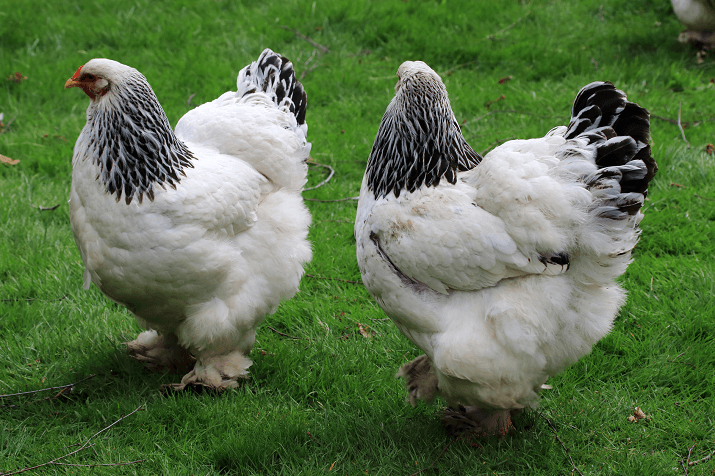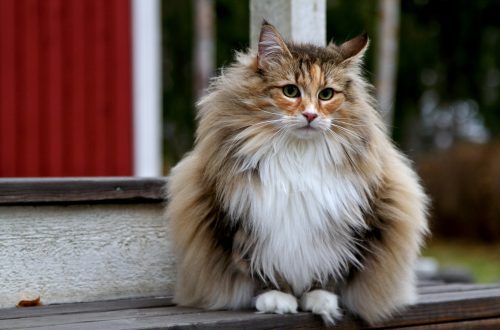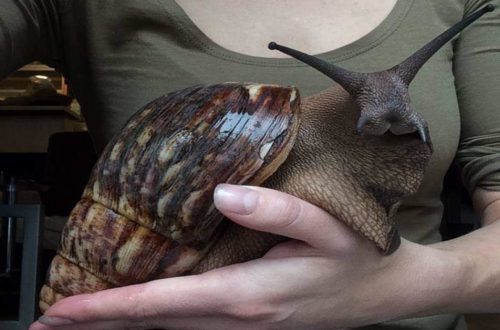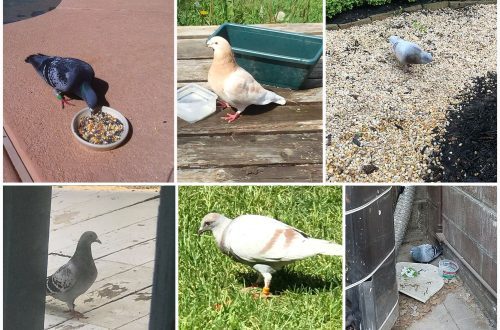
Description and breeding of the Brahma chicken breed. Their correct content in various conditions.
Decided to become a farmer? Or simply there was a desire to acquire a different breed of chickens, such as Brahma? Then you need to start your activity with the study of elementary questions, how to keep them, what conditions are more acceptable for them, and what to feed them.
The birthplace of this breed, according to experts, is considered to be North America. A variety of these chickens gained its fame through the crossing of Malayan and Cochin chickens. Currently, interest in this breed among poultry farmers and farmers has increased rapidly.
Contents
Brahma chickens
The planning of this breed initially consisted in breeding them in cold climatic conditions, in connection with this, all Brahma chickens have feathered legs. As for the productivity of these chickens, it is almost the same with all subspecies of this breed.
Chicken weight can reach 4 kg, and the cockerel is 5 kg. The egg shell is quite strong and has a cream color. During the year, the chicken is able to carry up to 130 eggs. An important fact is the late maturation of chickens and the laying of hens, however, in winter, the productivity of egg production does not decrease.
The Brahma chicken breed has a dense belly, a wide chest, a majestic posture worthy of attention, massive wings, a prominent beak, small ears, orange eyes with a red tint. The color of the cover of Brahma hens is varied. It lies in the fact that they can have partridge and dark color, fawn and light.
Description of the subspecies of the Brahma breed
Light colored chickens. The name of the light hens can also sound like a Colombian brama because of the silver-white color. A collar in the form of a black strip can be seen on the neck. The top of the tail and wings are also black.
Dark colored chickens.
The next subspecies of the Brahma breed has a charming pattern on the wings, the color of the chickens is quite dark. The head has a silvery-white color, the plumage of the body itself is of a grayish tint, a pronounced light border, notice on the neck. The plumage pattern of this breed is similar to a crescent. Cockerels have plumage of a completely opposite color. The head of the cockerel is silvery-white, the neck and shoulders have the same shade, the rest of the body is black with a mother-of-pearl greenish tint. The pattern on the legs is identical to the color of the body.
Fawn chickens and hens. The difference between fawn hens and roosters is only in one thing, this mane. In males, it is darker, but otherwise everything is the same. The presence of feather trim on the legs, a dark collar, this breed should not have other colors.
Partridge hens. Another subspecies of the Brahma chicken breed is the partridge. Chickens have a light fawn plumage color, clearly visible black-gray feathers. As for the roosters, they have a red-red color of the back and head, the color scheme of the rest of the body is rich black with a greenish tint.
So, where to start breeding the Brahma breed?
It is advisable to decide in advance and thoroughly in what way and how the breeding will be carried out, as well as the cultivation of Brahma chickens. There may be several paths. Either hatching eggs or chicks are purchased.
Maybe you want to buy Brahma breed exclusively for beauty and exhibitions? In fact, it doesn’t matter for what purposes they decided to breed this breed of birds, the very content of these beautiful representatives of chickens is important.
First, you need to build a chicken coop with feeders, perches, drinkers and nests. For the purity of the breed not recommended to keep together other birds. The room must have stable ventilation, dryness and cleanliness of the chicken coop. Mandatory lighting support for active egg production.
It is recommended that the floors be concreted with a thick layer of bedding in winter up to about 8 cm, and in warm weather up to 6 cm, of course, that the bedding should be dry. Regular monitoring of room temperature with thermometers.
Timely care of this breed will bring a lot of positive emotions, because these chickens are resistant and unpretentious to various conditions, their maintenance is completely simple.
As for the feeding of the Brahma breed, I would like to say that they are lovers of food and exceptional gourmets in food. Feed should be:
- High Quality,
- fresh,
- balanced with fats
- proteins,
- carbohydrates.
In their daily diet, chickens should receive grain, leftovers and waste food, and most importantly, protein and calcium.
A good and desirable top dressing is fish fat. The chicken needs access to a constant presence of gravel and coarse sand. The organization of feeding Brahma chickens should be according to a strictly established regime.
The morning menu of chickens consists of a grain mixture. In the afternoon, the diet consists of a wet mash and in the evening the food consists of grains. In order for the chickens to be more mobile and active, it is permissible to add another 15% of the feed to the grain rate.
Drinking water should always be fresh; in cool times, brahma chickens are better and more expedient give warm water. A Brahma hen can eat less food and drink twice as much water. Disinfection of drinking bowls must be carried out regularly.
It is better to make a design for drinking water for chickens at chest level, but the feeders themselves are just above the chest, installed so that feed and grain are less scattered. Be sure to hang the net, because the cockerel will not take long to beg to try delicious food.
A rooster feeder is made in a similar way, but is installed at head level.
Because of their massive physique, Brama chickens it is better not to hatch chickens, as most will be crushed, although they have a high brooding instinct.
It is also useful to monitor the weight of this breed, too much weight also has a bad effect on these chickens, so it is better to keep them starving a little, or make a replacement for a low-calorie feed.
Identification of breed characteristics and characteristics of chickens of the Brahma breed appear in the second year of their life. Therefore, for incubation, it is better to choose eggs in the period of 115-125 weeks.
Brahma hens, as the practice of caring for them, begin to rush at the age of 8 months, quite late compared to other species. Reaching the age of 2 years, egg production decreases in Brahma hens.
Egg weight can reach 65 g.
Breeding today breeds of chickens and chickens Brahma is gaining great popularity, and not only among farmers, but also in special poultry farms.





